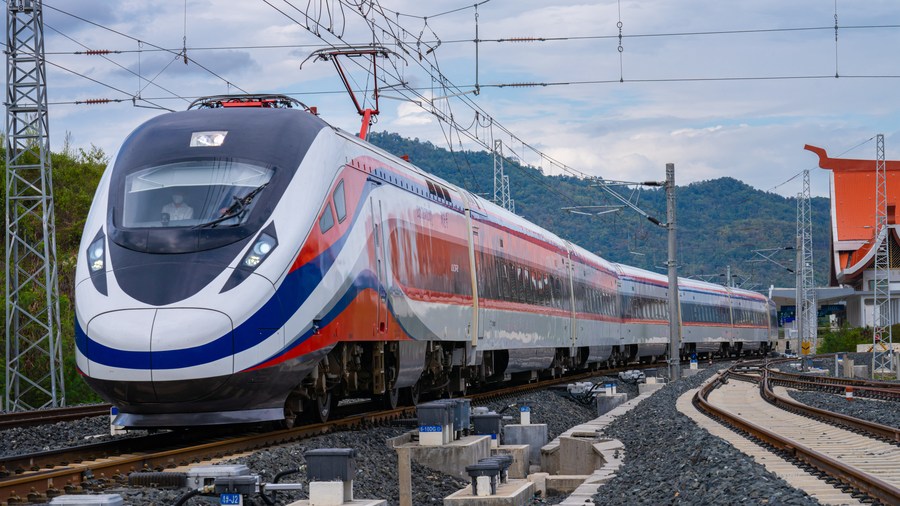China-South Asia infrastructure cooperation fuels connectivity, prosperity

The Lane Xang passenger train of the China-Laos Railway runs past a maintenance center in Luang Prabang, Laos, March 30, 2023. (Photo by Zhou Xing/Xinhua)
KUNMING, Aug. 22 (Xinhua) -- Walking the talk of high-standard opening up, China and South Asian countries have witnessed substantial progress in enhancing connectivity and infrastructure development.
Statistics from China's Ministry of Commerce indicate that, up to now, China's cumulative investment in the South Asian region has reached nearly 15 billion U.S. dollars. Completed project contract turnover has exceeded 200 billion U.S. dollars.
From Gwadar Port in Pakistan to more than 30 road and bridge projects in Bangladesh, as well as other collaborative projects such as the expansion of Nepal's Pokhara International Airport, China has made significant contributions to the development and connectivity of South Asian countries and propelled the local economy.
Among the glittering array of infrastructure achievements is the China-Laos Railway, which is more than a mere connection of tracks, but a bridge of communication.
The international passenger train service of this railway, inaugurated on April 13 this year, connects the Laotian capital Vientiane directly with Kunming, capital of China's Yunnan Province. This has presented international participants at events like the China-South Asia Expo with a novel travel choice.
The five-day event, held in Kunming, attracted over 30,000 exhibitors as well as representatives and guests from 85 countries, regions and international organizations.
Mohammad Fazle Rabbi, a Bangladeshi entrepreneur participating in the expo, was impressed by the convenience of the China-Laos Railway during his trip.
"I envision the China-Laos Railway as a bridge, fostering connectivity between China and the Indochina Peninsula, and potentially extending its reach to facilitate exchanges between China and the Indian Ocean in the future," the businessman told Xinhua.
As of Aug. 15, the Mohan entry-exit border had handled a total of 246 cross-border passenger trains from China and Laos, carrying some 53,000 passengers from 53 countries and regions.
Along with this railway, the China-Pakistan Economic Corridor (CPEC), launched in 2013, also serves as a fine example of China's booming transportation cooperation with neighboring countries.
By the end of 2022, the CPEC had brought a cumulative direct investment of 25.4 billion U.S. dollars to Pakistan, generating around 236,000 job opportunities.
It has also contributed to the construction of 510 kilometers of highways, 8,000 megawatts of power generation, and 886 kilometers of national core power transmission networks in Pakistan.
Furthermore, in Sri Lanka, the first highway was completed, while in Bangladesh, the tunnel under the Karnaphuli River was built. The Maldives also benefited, with its first-ever sea-crossing bridge erected. These endeavors are examples of China's collaborative efforts with South Asian countries.
As infrastructure construction accelerates, so interconnectivity drives mutual prosperity. Afghan pine nuts have gained a reputation for excellence, yet due to historical transportation constraints, their market value remained compromised. In response, China established an "aerial corridor for pine nuts," allowing a large volume of Afghan pine nuts to enter the Chinese market.
Currently, more than 10,000 tonnes of Afghan pine nuts have been enjoyed by Chinese consumers, while Afghan farmers have reaped over 400 million yuan (about 55.6 million U.S. dollars) in revenue.
Thanks to the developing transportation infrastructure, ties between China and South Asia became closer over the past 10 years, with the trade volume between China and South Asian countries doubling. China has for years been the biggest trading partner for Pakistan, Bangladesh and the Maldives.

